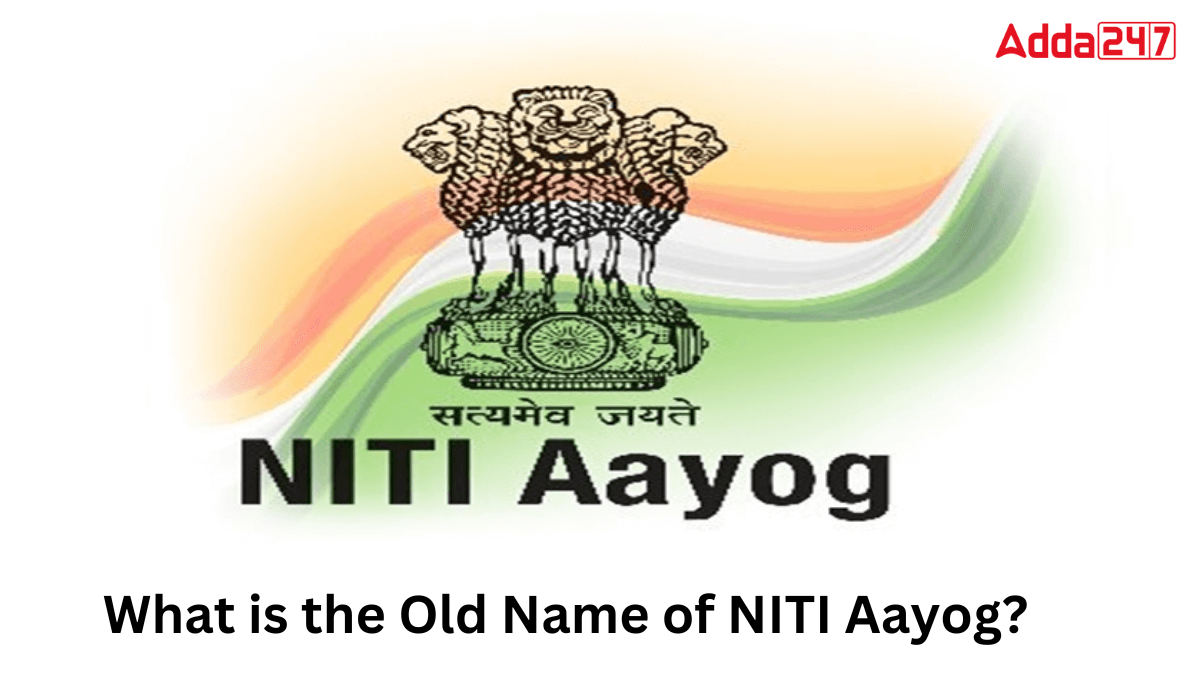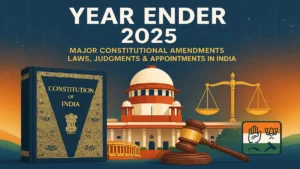India has always focused on planning and development to improve the lives of its people. Over the years, the government has created institutions to guide the country’s progress and adapt to changing needs. One such organization has played a significant role in shaping policies and strategies for economic growth, but it underwent a major transformation to better serve the nation’s goals in the modern era.
Old Name of NITI Aayog
Before NITI Aayog, India had the Planning Commission, which was set up in 1950. It mainly prepared five-year plans and looked after the country’s economic strategies. In 2015, NITI Aayog took its place with a new goal of encouraging modern, inclusive, and region-based growth. Unlike the earlier system, NITI Aayog works with a “bottom-up” approach, promoting teamwork between the Centre and states while focusing on their specific needs.
An Overview of NITI Aayog
NITI Aayog, short for the National Institution for Transforming India, is the leading policy think tank of the Government of India. Established in 2015, it replaced an earlier organization called the Planning Commission. NITI Aayog plays a key role in shaping India’s development strategies using modern, inclusive and state-focused approaches.
Why was the Planning Commission Replaced?
In 2014, Prime Minister Narendra Modi felt that the Planning Commission had become less effective. It worked well during a command economy when the government controlled most economic activities. But as India’s economy grew more dynamic and market-driven, this model was no longer suitable.
Key reasons for replacing the Planning Commission included:
- Lack of State Involvement: The Planning Commission did not involve state governments enough in decision-making.
- One-size Fits All Approach: Its strategies were uniform for all states, ignoring the different needs of each region.
- Global Competition: India needed a modern system to stay competitive in the global market.
Formation of NITI Aayog
On January 1, 2015, the Union Government officially replaced the Planning Commission with NITI Aayog. The new organization adopted a “bottom-up” approach, focusing on state-specific policies and cooperative federalism.
The first meeting of NITI Aayog was chaired by Prime Minister Narendra Modi on February 8, 2015. Finance Minister Arun Jaitley described the Planning Commission as “redundant” and explained why the country needed a fresh approach to economic planning.
How Does NITI Aayog Work?
NITI Aayog includes key representatives like:
- The Prime Minister, who serves as the Chairperson.
- Chief Ministers of all states and Union Territories.
- Lieutenant Governors of Union Territories.
- A Vice-Chairperson and full-time members.
It also brings in experts from research institutions and universities for advice.
NITI Aayog’s Role and Initiatives
NITI Aayog focuses on:
- Policy making: Creating strategies for long-term growth, such as the 15-year roadmap and 7-year vision.
- Reforms: Bringing changes in agriculture, health and education systems.
- Technology Initiatives: Projects like IndiaChain (blockchain technology) and the use of artificial intelligence.
- Sustainable Development: Plans like the Jal Jeevan Mission and LiFE Mission promote water conservation and eco-friendly lifestyles.
Vision of NITI Aayog
NITI Aayog aims to transform India with a focus on rapid development rather than gradual change. It works closely with states, promotes innovation, and ensures that policies address the diverse needs of India’s population.



 Which Tree is known as the Christmas Tre...
Which Tree is known as the Christmas Tre...
 Year Ender 2025: Major Constitutional Am...
Year Ender 2025: Major Constitutional Am...
 Is Vatican City a Country or City? Explo...
Is Vatican City a Country or City? Explo...







